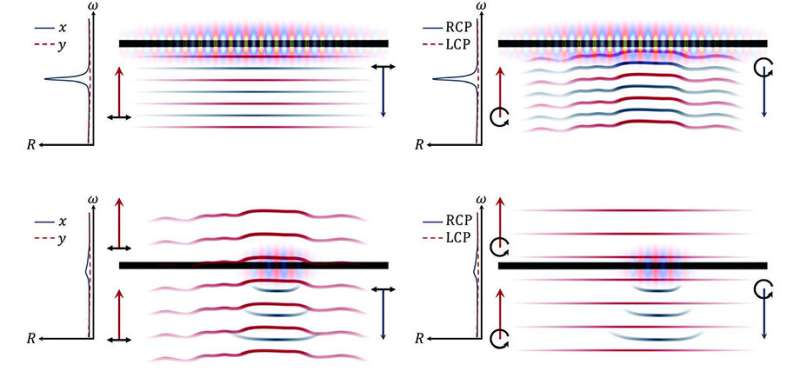Looking at optical Fano resonances under a new light

In 1961, physicist Ugo Fano provided the first theoretical explanation to an anomalous asymmetry observed in the spectral profiles of noble gases. He put forth an impactful interpretation of this phenomenon, now called 'Fano resonance,' stating that if a discrete excited state of a system falls within the energy range of a continuum of other possible states, these two can interfere with each other and give rise to abnormal peaks and dips in the system's frequency response.
Though Fano resonance can occur in various physical systems, recent progress in metasurfaces and nanotechnology has drawn attention to this phenomenon as a potentially powerful tool in optics. The conventional understanding of optical Fano resonances is that they are selective in the momentum-frequency domain; in other words, they can only be excited by planar light waves with specific frequencies and incidence angles, thus limiting their applicability. But could this picture actually be incomplete?
In a recent study published in Advanced Photonics, scientists Adam Overvig and Andrea Alù from the Advanced Research Center, City University of New York, USA, investigated Fano-resonant metasurfaces and discovered new properties that could unlock their true potential. Overvig and Alù went beyond the periodic metasurfaces conventionally used for eliciting Fano resonances, proving that strict periodicity is not actually required to enable this phenomenon, and as a result existing metasurfaces only account for a specific subset of the Fano resonances that can emerge in optical systems.
A general example is useful to get the overall gist of the study. A conventional, periodic Fano-resonant metasurface offers strong polarization, and both spectral and angular selectivity. This means that the system barely reflects light of any given frequency, incidence angle, and polarization unless they specifically match those of its Fano resonance (in which case, perfect reflection occurs). As stated before, another important aspect of such periodic metasurfaces is that they can only undergo Fano resonances if the incident light waves have a planar wavefront. In stark contrast with these limitations, the researchers proved that it is possible to craft a nonperiodic metasurface that achieves perfect reflection, curiously accompanied by phase conjugation of the incoming fields, for light waves with an arbitrarily tailored wavefront shape and form.
Overvig and Alù mathematically demonstrated that these metasurfaces can be built by strategically introducing nonperiodic perturbations in otherwise highly periodic photonic crystal slabs. Their work sheds light on yet-unexplored aspects of optical Fano resonance, extending the concept beyond conventional understanding.
The proposed strategy has multiple relevant applications, as summarized by Alù: "Our finding generalizes the concept of a Fano resonance, showing that it is not necessarily associated with a planar wavefront. In practice, this enables a new class of optical devices that are transparent and weakly interacting with the incoming light for most excitations but are somehow triggered by a specific wavefront form, frequency, and polarization, which can be selected by design. Only under this specific excitation condition, the device becomes highly reflective and sends back a time-reversed version of the specific input."
He elaborates on the functionality of such devices: "An example can be a transparent surface that can be illuminated from any angle and any frequency and polarization, and it is always transparent. However, if you illuminate it with a localized point source placed at a specific location only, with the precise frequency and polarization, all the input energy is reflected and focused back at the location of the source."
The introduced concept of generalized Fano resonances could pave the way for sophisticated metamaterials that manipulate light in novel ways, with exciting applications in a disparate number of scenarios not limited to optics, but also extendable to acoustics and other wave phenomena.
More information: Adam Overvig et al, Wavefront-selective Fano resonant metasurfaces, Advanced Photonics (2021). DOI: 10.1117/1.AP.3.2.026002
Provided by SPIE





















